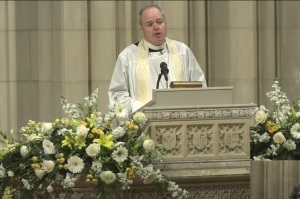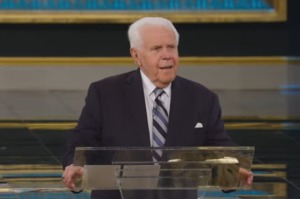Trump Is a 'Low Interest Guy,' Here's Why That's a Bad Idea

Are you a low interest rate person? Donald Trump is. In a widely reported interview on CNBC last week, Mr. Trump emphasized that he is "a low interest rate guy."
He went on to say "if we raise interest rates and if the dollar starts getting stronger, we're going to have some major problems. If interest rates go up one percent, that's devastating."
Mr. Trump is entirely correct that higher interest rates will cause difficulty in Washington. A mere one percent increase in the interest rate will ultimately increase the burden of paying interest on the $20 trillion national debt by $200 billion annually. There are about 150 million workers in the United States. A $200 billion increase in the annual interest burden means that taxes have to be increased by $1,333 for each worker. Alternatively, Congress can choose to reduce spending on government provided services by $1,333 per worker.
Unfortunately, a mere one percent only gets halfway back to where interest rates would be if they were not manipulated by the Federal Reserve (the Fed). A two percent increase is needed to get close to where interest rates would be in a healthy economy. Each worker in America would need to cough up $2,666 more in taxes, or face reduced government services of equal cost to pay the higher interest cost.
No wonder Mr. Trump is "a low interest rate guy".
While low interest rates make life easier for Washington politicians, they are not good for the rest of the country. Low interest rates cause significant problems for state and local governments, and even for the federal government.
The problem is that governments not only have debts on which they have to pay interest, they also have future promises to keep. Pension obligations are the main promises coming in the future, but not the only ones. These promises are more affordable if monies set aside annually in funded accounts earn interest to pay for the future pensions. If the funds cannot earn a good rate of return, then taxpayers have to make up the shortfall with more taxes.
Here is an illustration of the problem.
Suppose Sadie is a recent college graduate. She lands a good job and earns the average wage for Americans, about $60,000. She expects to earn the average wage until she retires in forty years. Sadie also has $60,000 of student loans. (The national debt is about the same amount as national income, hence the illustration has them equal.) Sadie plans to save an equal portion of her income for retirement so that she can maintain the same standard of living during an expected twenty years of retirement. In a healthy economy, Sadie expects to earn 8% in her retirement account, the same as the interest rate on her student loans. The cost of interest on the student loans is $4,800 per year and she needs to save $2,190 per year for retirement. This leaves Sadie with $53,010 to pay her taxes and make a life.
But now suppose the Fed suppresses interest rates to 6%. In a 6% economy, Sadie would pay only $3,600 in interest on her student loans but she would need to save $4,140 for retirement each year to make up for lower interest earnings in her retirement account. This leaves her with $52,260 left over with which to pay her taxes and make a life.
Sadie would be better off with higher interest rates, leaving her more money with which to make a life.
So it is with governments across the land. Pension obligations are crushing state and local governments, causing them to cut government services. Low interest rates are making a bad problem even worse.
A rough estimate of the present value of pension obligations of state and local governments is about $5.1 trillion, using data from 2014. If the states value pension obligations by the assumed interest rate methodology recommended by the independent panel commissioned by the Society of Actuaries to study this issue in 2014, and if interest rates are suppressed by two percentage points, then the actuarial liability for future pensions increases to $6.9 trillion. Against this states have only set aside about $4 trillion, leaving a big hole to be filled by taxpayers.
So it is by no means clear that low interest rates are good for governments.
For state and local governments, low interest rates are making things worse, a lot worse. It is probably making things worse for the federal government too, but the negative impact is not as visible as the positive benefit of low interest payments on the debt.
There are other important reasons why abnormally low interest rates are a very bad idea. Unfortunately, the negative consequences of low interest rates are not obvious, so the danger is often ignored.
Cheap money leads to excessive and wasteful spending by governments; cash for clunkers and bridges to nowhere. Cheap money leads to building excess capacity, which leads to crashing prices and crashing economies, such as the housing boom and bust in 2004-2010. And low interest rates make it difficult for people trying to save for future needs, making them more dependent on government, and less self-reliant.
Making life easier for Washington politicians is not a reason for the Fed to manipulate interest rates to keep them at zero for eight years and counting. It's time to end the manipulation of interest rates.





























